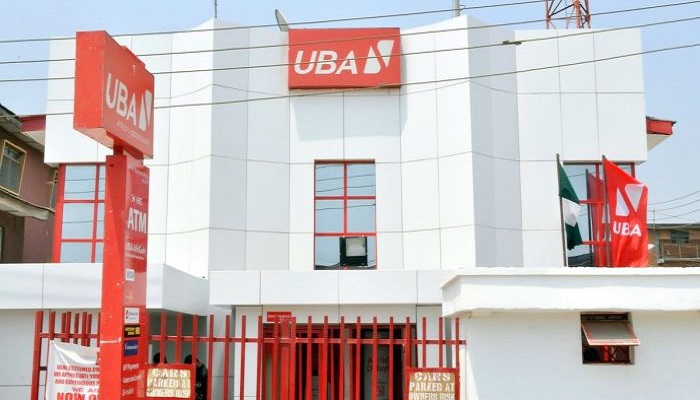United Bank for Africa (UBA) delivered a Profit After Tax (PAT) of N335.53 billion in the first half of 2025, up about 6% from N316.36 billion in the same period last year. The result, released recently, comes despite headwinds in interest rate volatility, foreign exchange fluctuations, and sharp increases in funding costs in many of its 20-country pan-African operating footprint.
Gross earnings for UBA rose by around 17% to N1.608 trillion, significantly higher than the N1.371 trillion posted in H1 2024. A large portion of that growth came from interest income, which climbed to N1.33 trillion from about N1.00 trillion — a clear signal that lenders are still benefiting from yields in a high interest environment. But with higher earnings came rising costs: interest expense surged to N560.61 billion, nearly double from the previous year, illustrating how the cost of funds is eating into margin.

Net interest income stood at N773.03 billion, a growth of 14-15% year-on-year. After adjusting for impairment charges and credit risk costs, UBA’s net interest income still rose meaningfully. Impairment charges dropped significantly—meaning fewer bad loans or write-downs compared to H1 2024—and this helped lift profitability despite pressures elsewhere.
On the non-interest side, fee and commission income saw modest growth, moving to N147.04 billion from N145.10 billion. However, UBA recorded a net loss in trading and foreign exchange activities of about N10.05 billion, reversing a gain of nearly N98 billion from the same period last year. Other operating income jumped somewhat, benefiting from dividend inflows, rental, and other non-core banking lines, though these did not fully offset losses in FX trading.
UBA’s pre-tax profit edged down slightly—from about N401.6 billion in H1 2024 to N388.4 billion in H1 2025. That drop before tax was softened by a sharp decline in tax expenses (from roughly N85.2 billion to about N52.9 billion), which helped boost the after-tax result that investors often judge most closely.
The bank’s balance sheet also showed expansion. Total assets grew to around N33.27 trillion from N30.32 trillion at the end of 2024. Customer deposits increased, loans and advances ticked up, and shareholders’ equity posted strong gains. These movements suggest that UBA is not only growing revenue but also strengthening its base to withstand tougher regulatory and economic demands ahead.
Cost pressures remain significant. Operating expenses—staff, administration, branch operations—rose, and while management has indicated efforts to keep cost growth in check, some cost lines are rising faster than revenue in certain segments. Also, growth in interest expenses (due to rising rates and possibly more expensive deposits/funding) is a drag.
One of the standout positives in the report is a reduction in fraud losses and improvement in credit risk management. Fraud losses for UBA in H1 2025 were cut by about 45%, falling to N288 million, reflecting improved internal controls, technology investments, and tighter scrutiny of electronic transactions and unauthorized transfers. That matters a great deal, especially as digital banking grows and fraud attempts increase globally. Lowered impairment charges also point to more stable loan performance during this period.
UBA also proposed an interim dividend of 25 kobo per share, set to be paid in October 2025 to shareholders on the register as of early October. While the dividend yield is modest compared to some historical levels, the payout reflects balance between rewarding shareholders and ensuring enough capital is retained for expansion and risk absorption.
Analysts view UBA’s results as evidence of resilience. Despite margin squeeze and elevated cost pressures, the bank managed to increase profit after tax, grow its asset base, and maintain customer deposits and liquidity. The performance also reflects UBA’s strategy of balancing growth and prudence—expanding in African markets while investing in technology, risk management, and regulatory compliance.
Still, risks persist. Inflation remains high in Nigeria and in some of UBA’s other markets; foreign exchange instability could erode returns; funding costs may continue rising; and policy shifts in interest rates could compress margins further. Also, the mixed performance from non-interest income sources and FX losses indicate areas where performance remains volatile.
Going forward, UBA appears focused on a number of strategic priorities: completing its second phase of a rights issue to bolster capital; improving efficiency through technology and automated channels; expanding digital and non-interest revenue streams; and continuing to tighten risk controls especially for fraud and credit defaults. These moves will be key to maintaining profitability in an environment where external pressures are unlikely to ease quickly.
For shareholders, customers, and regulators, UBA’s H1 2025 shows a bank that is growing despite turbulence—not perfect, but making progress. The combination of stronger asset growth, lower tax burden, better control of fraud, and dividend payout suggests UBA is maintaining confidence among investors. If the bank can manage costs, especially the rising interest expenses, it stands a chance of stronger performance in the second half of the year.
In sum, UBA’s ₦335.5 billion profit after tax in the first half of 2025 underlines its ability to deliver growth even amidst economic challenges. Its balance sheet strength, asset growth, and improved risk metrics are positives. However, sustaining these results will depend heavily on managing costs, FX risks, and ensuring regulatory and market conditions don’t worsen.
Support InfoStride News' Credible Journalism: Only credible journalism can guarantee a fair, accountable and transparent society, including democracy and government. It involves a lot of efforts and money. We need your support. Click here to Donate
